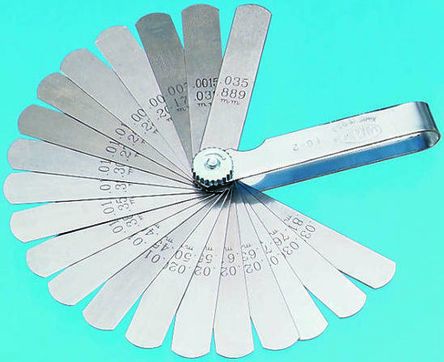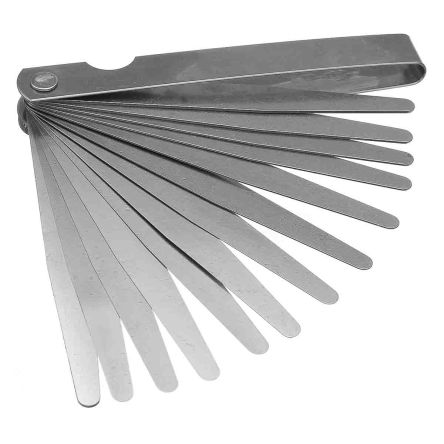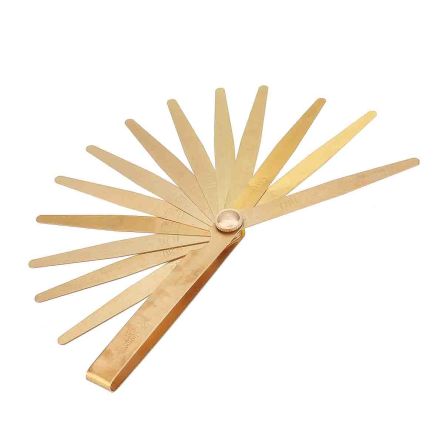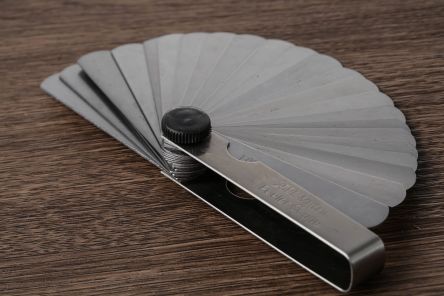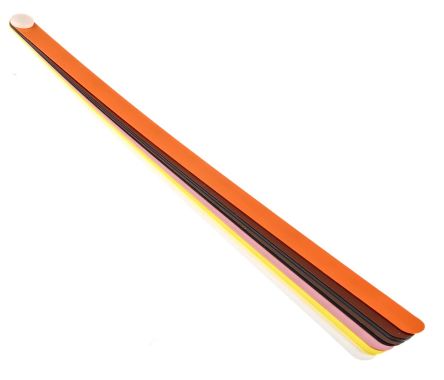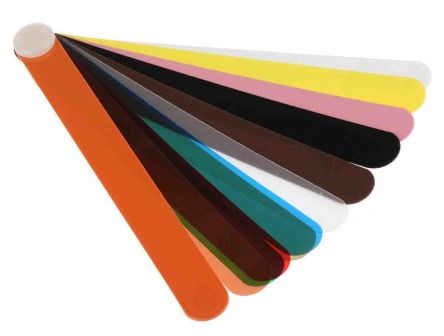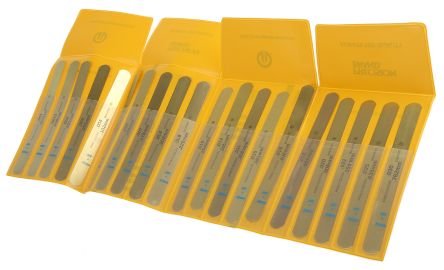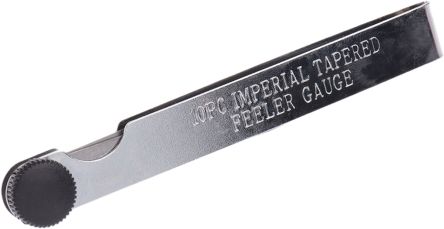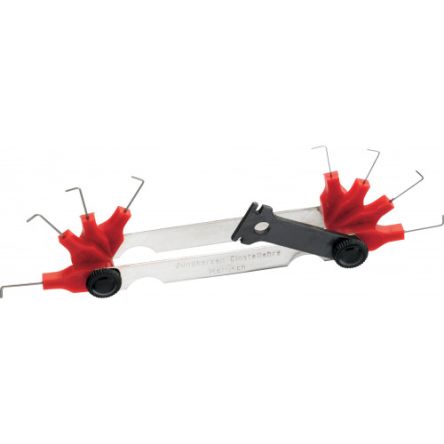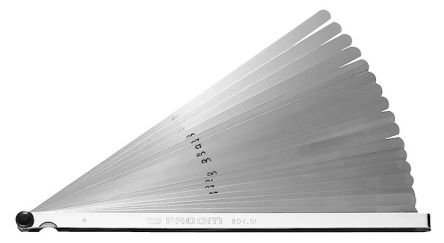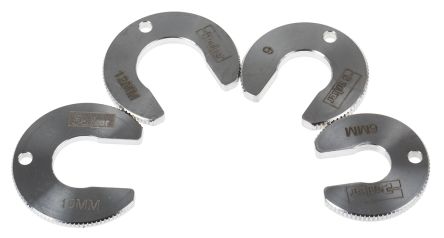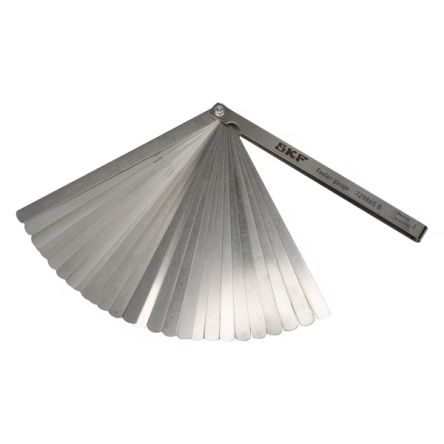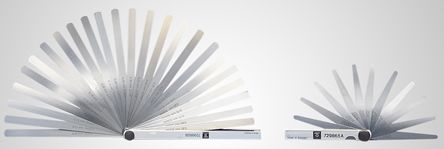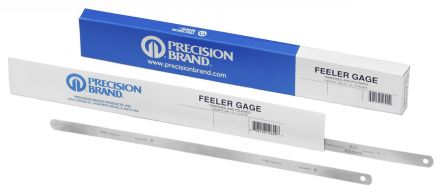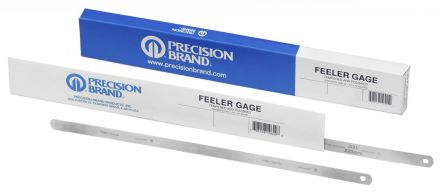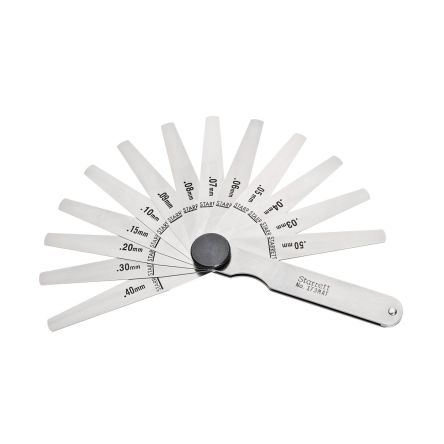- Automation & Control Gear
- Cables & Wires
- Enclosures & Server Racks
- Fuses & Circuit Breakers
- HVAC, Fans & Thermal Management
- Lighting
- Relays & Signal Conditioning
- Switches
- Batteries & Chargers
- Connectors
- Displays & Optoelectronics
- ESD Control, Cleanroom & PCB Prototyping
- Passive Components
- Power Supplies & Transformers
- Raspberry Pi, Arduino, ROCK, STEM Education & Development Tools
- Semiconductors
Feeler Gauges
Feeler gauges are handheld tools that are used to measure the distance between two objects, specifically very small distances between two components in a system. They utilize short, rounded blades of different, precise thicknesses to perform the measurement, where the user slides the blade between two objects to determine the distance. This differs from using a traditional ruler or measuring tape and provides a more accurate measurement for small distances.Feeler gauges come in a variety of build materials and size ranges and can measure as low as thousandths of an inch in imperial measurements, or hundredths of a millimeter in metric measurements. Each blade on a feeler gauge represents a different thickness and the blades pivot outwards much like a hand fan or a straight-edge razor. Stainless steel feeler gauges are the most common as they are sturdy and can be more accurate than a flimsier material.For very small distances, using a ruler or measuring tape would be inefficient with a high risk for inaccuracy. Engineers use feeler gauges as a measuring tool because instead of aligning the measuring device over the opening between two objects, as you would a ruler or measuring tape, they slide the blade into the opening and feel for any drag. This "feeling" of drag indicates that the opening is the same size of the specific feeler gauge blade, and is how the feeler gauge gets its name.Engineers using feeler gauges need to deploy a Go NoGo strategy in finding the right sized blade. They must estimate the size of the gap and select a blade to try. Once they align the blade perfectly straight in relation to the gap, they can slide the blade into the gap to test the size. If the blade is too small, there will be no friction or drag, but if the blade is too big it won't fit in the gap.RS Components carries a wide selection of feeler gauges, ranging in size, build material, and measuring system. Use the filters on the left to narrow down our inventory and find the feeler gauge that is right for your job.
Imperial and Metric Feeler Gauges
Depending on where you are and which measurement system you are comfortable with, you might be looking for imperial or metric feeler gauges. Luckily, the only difference between the two is in which units the measurements are listed. In fact, some feeler gauges might have both metric and imperial measures engraved into each blade for added convenience.Imperial feeler gauges are most often used in North America, where the imperial system is commonly the dominant system. Blades on imperial feeler gauges can range from as low as .0015 inch to thicker blades measuring .025 inch.Elsewhere in the world, metric feeler gauges are the norm, as the metric system is used by almost every country. Metric feeler gauges have blades that range from as narrow as .04mm up to thicker blades that measure 1mm.
Feeler Gauge Materials - Plastic, Steel, Stainless Steel Feeler Gauges
Depending on the job, you might want to keep a few different feeler gauges made of different materials on hand. Typically, feeler gauges are made from a sturdy metal to ensure the blades retain their structure after heavy use. However, it is also common to see plastic feeler gauges used to measure gaps between delicate instruments or magnetized surfaces. Plastic feeler gauges are also more cost-effective, but may suffer from wear and tear faster than stainless steel feeler gauges.
